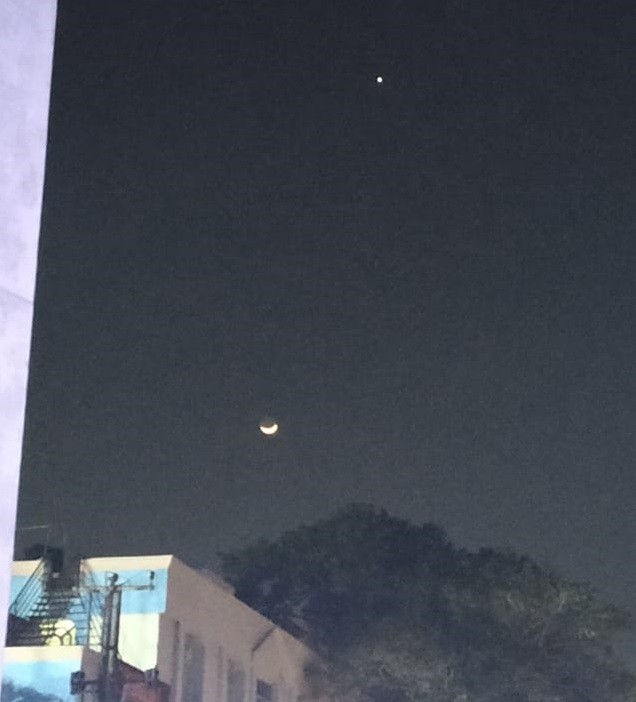Venus comes closer to Earth, seen beside moon
By Anurag Mallick
Hyderabad: Even as the natural phenomenon of the planets revolving around the sun and the moon revolving around the earth is underway, planet Venus has come closer to earth. The astronomer’s delight is such that it will be so near that it will be seen beside the moon on Wednesday and Thursday (January 29, 30).
As Venus came closer to earth and was seen besides the moon, according to a 2012 report, it is 25 million miles (40 million km) away at that particular point but could reach as close as 24 million miles ( 38 million kms ). Many confuse Venus as the planet closest to earth when it is actually Mercury that is closer.

Speaking to Newsmeter, Director of Planetary Society of India, N Raghunandan, said "All of us know that planets go around the sun whereas the moon goes around the earth. When you see the moon every day, you can point it out in a new location in the sky. Today, the geometrical position of Venus, earth and moon was such that people could see Venus above the moon in the sky. The placement of earth, moon and Venus in the solar system are such that people on earth across the world, could see the crescent moon and above it, Venus.
Generally what people think is that they cannot spot the planets and require telescope for it. This is the general perception. We can now spot Venus. Even today, people can spot a non-twinkling star-like object, which is Venus. The phenomenon can be spotted for the next two days using the moon. Two days later, Venus will be seen below the moon.
It can actually be seen every month. But it depends. Whenever one sees the moon, Venus can't be spotted. Venus at times can be visible in the morning sky. Sometimes in an entire year, it can be seen in the morning sky for a period of 6-8 months or in the evening sky.
People are observing Venus since November and it is the first bright object that is seen on the western sky till May.
What happens after May is that as earth and Venus revolve around the sun, their positions change in the sky. Consequently, Venus is seen in the morning instead of evening. As of now, the first non-twinkling object that we're going to see till May is Venus.
For the next two days, people can use moon to spot Venus without using a telescope. In order to see the finer details, one can use the telescope.